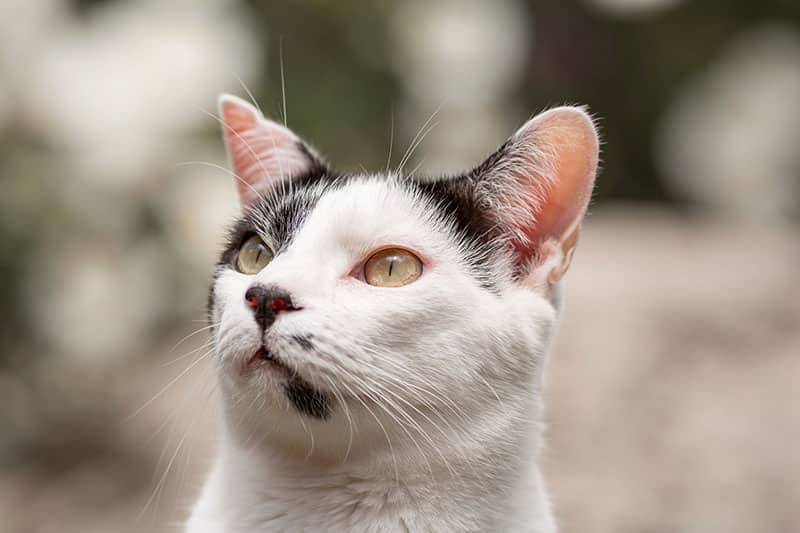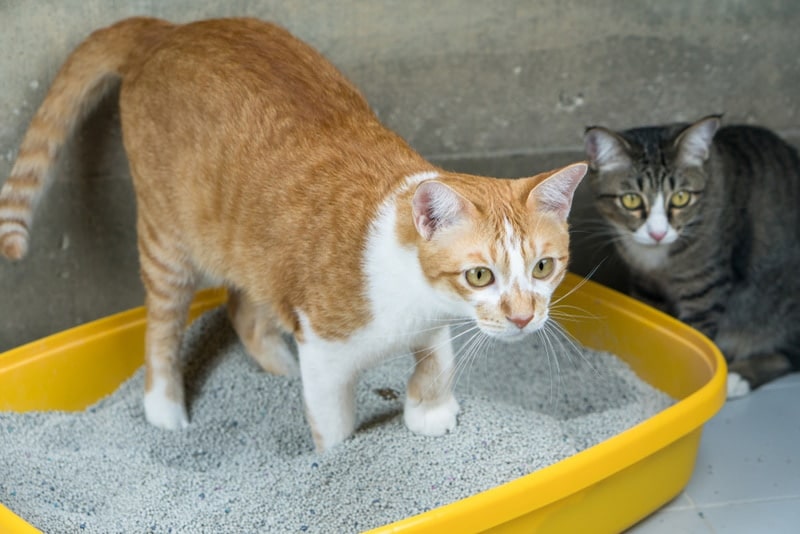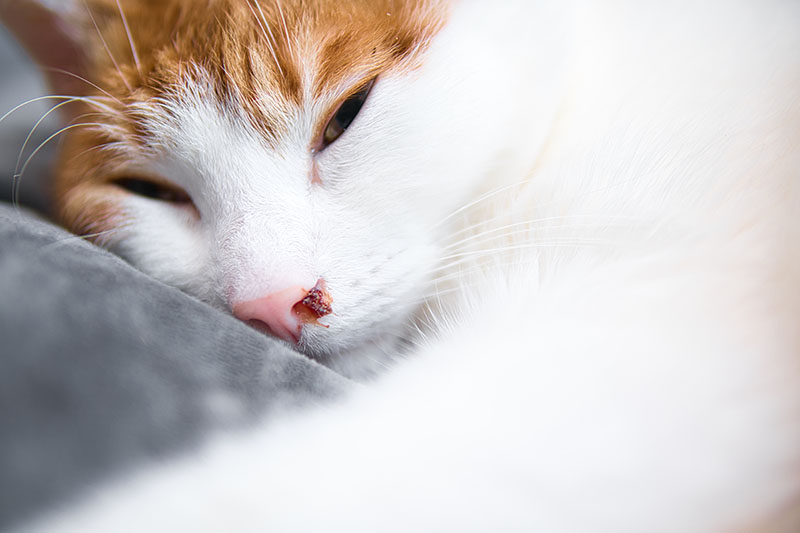Noticing your cat bleeding can be quite distressing, especially when you’re not sure about the cause. Bleeding in cats can occur for various reasons, ranging from trauma to immune disorders to infectious diseases. It’s important to remember that bleeding itself is not an illness but rather a sign of an underlying issue. If you observe your cat bleeding, it is strongly recommended that you reach out to your veterinarian for advice. In this article, we’ll explore common causes of bleeding in cats based on the location of the bleeding.
Bleeding From the Eyes
If you notice blood coming from your cat’s eyes, there’s a good chance that some kind of trauma has occurred. This could include scratching around the eye, leading to skin irritation, or a more serious injury such as trauma to the eyeball. In certain cases, blood may be visible within the eye itself due to specific types of injuries or infections.

Bleeding From the Ears
Ear infections can often lead to bleeding due to excessive scratching. Cats may also develop polyps within the ears, causing irritation and inflammation, which can result in bleeding. Significant head trauma can also lead to bleeding from the ears.
Bleeding From the Nose
Bleeding from the nose can be alarming, especially if there is blood splatter. This can occur due to various reasons, including nasal passage irritation caused by an ongoing upper respiratory infection, cancer, or even trauma such as foreign bodies. Diagnosing the specific cause of nasal bleeding may require a more in-depth investigation, such as rhinoscopy or the placement of a camera into the nasal passages.
Bleeding From the Mouth
If you observe blood in your cat’s mouth, it is often a result of gingivitis. Bleeding can also occur when teeth are fractured or pulled out, both of which can be painful. Trauma or the presence of a foreign body in the mouth can also cause bleeding. Injuries to the tongue or mouth tissues, as well as oral masses, can result in bleeding within the oral cavity. Severe bleeding in the chest due to significant body trauma can cause blood to be seen in the nose and mouth. Thorough evaluation of your cat’s oral cavity may require sedation.
Bleeding From the Skin
Bleeding from the skin is often a result of trauma and is easily recognizable. It’s important to note that bleeding can occur with both superficial and more significant deeper tissue injuries. In some cases, bleeding can be severe.
Blood in Urine
Noticing blood in your cat’s urine is unfortunately a common concern for many cat owners. Cats are unique creatures that can easily become stressed and develop cystitis, which is inflammation of the bladder. Blood is often present in the urine when this occurs. Other common causes of blood in the urine include infection, bladder stones, and cancer.

Bleeding From the Rectum
Bleeding can occur from issues higher up in the gastrointestinal tract, such as ulcerations, or from the rectum itself. Cats with diarrhea secondary to infection or constipation may experience bleeding from the rectum due to irritation and straining. Other possible causes include polyps, growths, and foreign bodies.
Internal Bleeding
Internal bleeding can be harder to recognize, as its signs depend on the location of the bleeding within the body. Some cats suffering from tumors impacting their liver or spleen may experience abdominal hemorrhage, resulting in abdominal distension. If bleeding occurs within the chest, labored breathing may be observed. Severe bleeding may cause pale gums, lethargy, and weakness in your cat.
Clotting Problems
Unfortunately, clotting problems in cats can lead to severe bleeding from different orifices. Immediate intervention is necessary in these situations. Some cats may develop immune-mediated disorders that affect platelets, or they may have been born with abnormal clotting factors. Ingestion of poisons or toxins can also cause clotting difficulties. Anticoagulant rat bait is an example of a poison that can affect clotting. Bleeding from different locations may be observed in cats with clotting disorders.
Treating Bleeding in Cats
As the possible causes of bleeding in cats are numerous, the appropriate treatment varies greatly. The first step is to determine the underlying cause of the blood loss, which can often be achieved through careful listening to the patient’s history and a thorough physical examination. Bloodwork may be recommended to check for underlying problems and red blood cell levels. In cases of anemia, treatment may include blood transfusions to quickly increase red blood cell levels. Regular blood checks will be necessary to monitor changes in red blood cell levels over time. Additional diagnostics such as endoscopy, ultrasound, and radiographs may be required depending on the location of the bleeding. Surgery may be necessary to repair wounds and stop bleeding, or supportive care through fluid therapy may be sufficient in other cases.
In summary, if you notice blood on your cat and can’t immediately identify the source, it is crucial to have your pet evaluated by a veterinarian. Depending on the findings, your veterinarian will provide treatment recommendations and interventions. In cases of severe bleeding leading to anemia, ongoing monitoring of red blood cell levels will be necessary.
Sources:
Catster
